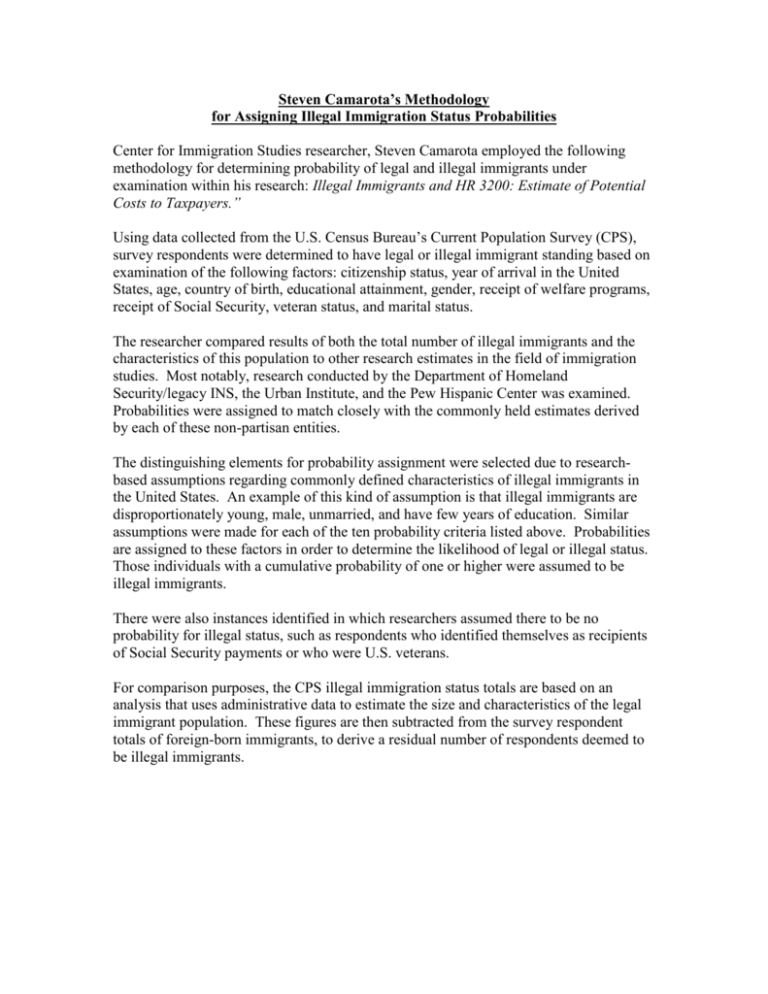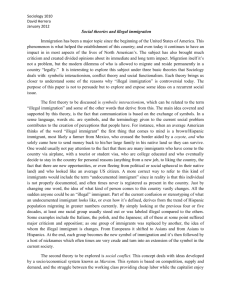Steven Camarota`s Methodology for Assigning Probabilities
advertisement

Steven Camarota’s Methodology for Assigning Illegal Immigration Status Probabilities Center for Immigration Studies researcher, Steven Camarota employed the following methodology for determining probability of legal and illegal immigrants under examination within his research: Illegal Immigrants and HR 3200: Estimate of Potential Costs to Taxpayers.” Using data collected from the U.S. Census Bureau’s Current Population Survey (CPS), survey respondents were determined to have legal or illegal immigrant standing based on examination of the following factors: citizenship status, year of arrival in the United States, age, country of birth, educational attainment, gender, receipt of welfare programs, receipt of Social Security, veteran status, and marital status. The researcher compared results of both the total number of illegal immigrants and the characteristics of this population to other research estimates in the field of immigration studies. Most notably, research conducted by the Department of Homeland Security/legacy INS, the Urban Institute, and the Pew Hispanic Center was examined. Probabilities were assigned to match closely with the commonly held estimates derived by each of these non-partisan entities. The distinguishing elements for probability assignment were selected due to researchbased assumptions regarding commonly defined characteristics of illegal immigrants in the United States. An example of this kind of assumption is that illegal immigrants are disproportionately young, male, unmarried, and have few years of education. Similar assumptions were made for each of the ten probability criteria listed above. Probabilities are assigned to these factors in order to determine the likelihood of legal or illegal status. Those individuals with a cumulative probability of one or higher were assumed to be illegal immigrants. There were also instances identified in which researchers assumed there to be no probability for illegal status, such as respondents who identified themselves as recipients of Social Security payments or who were U.S. veterans. For comparison purposes, the CPS illegal immigration status totals are based on an analysis that uses administrative data to estimate the size and characteristics of the legal immigrant population. These figures are then subtracted from the survey respondent totals of foreign-born immigrants, to derive a residual number of respondents deemed to be illegal immigrants.











